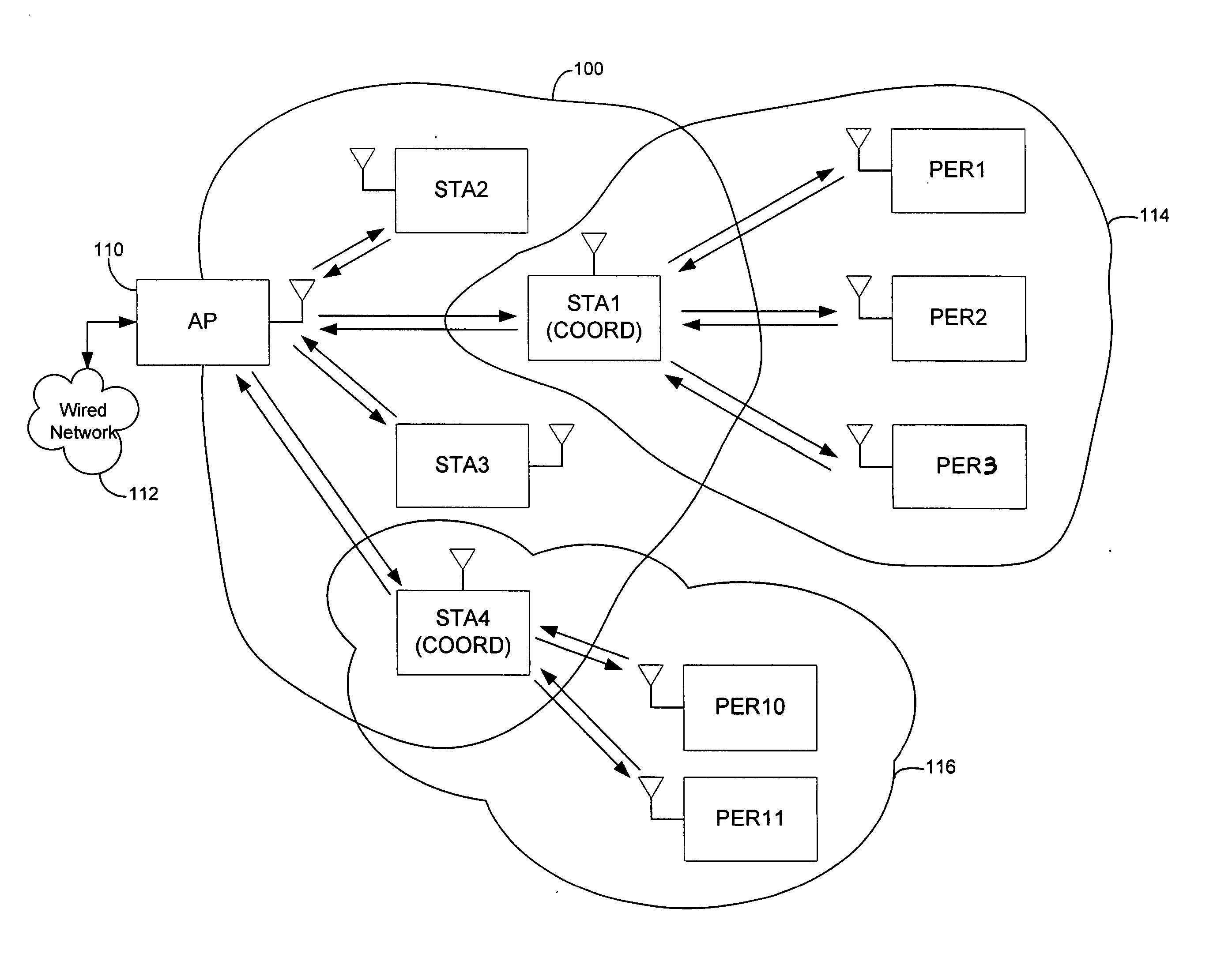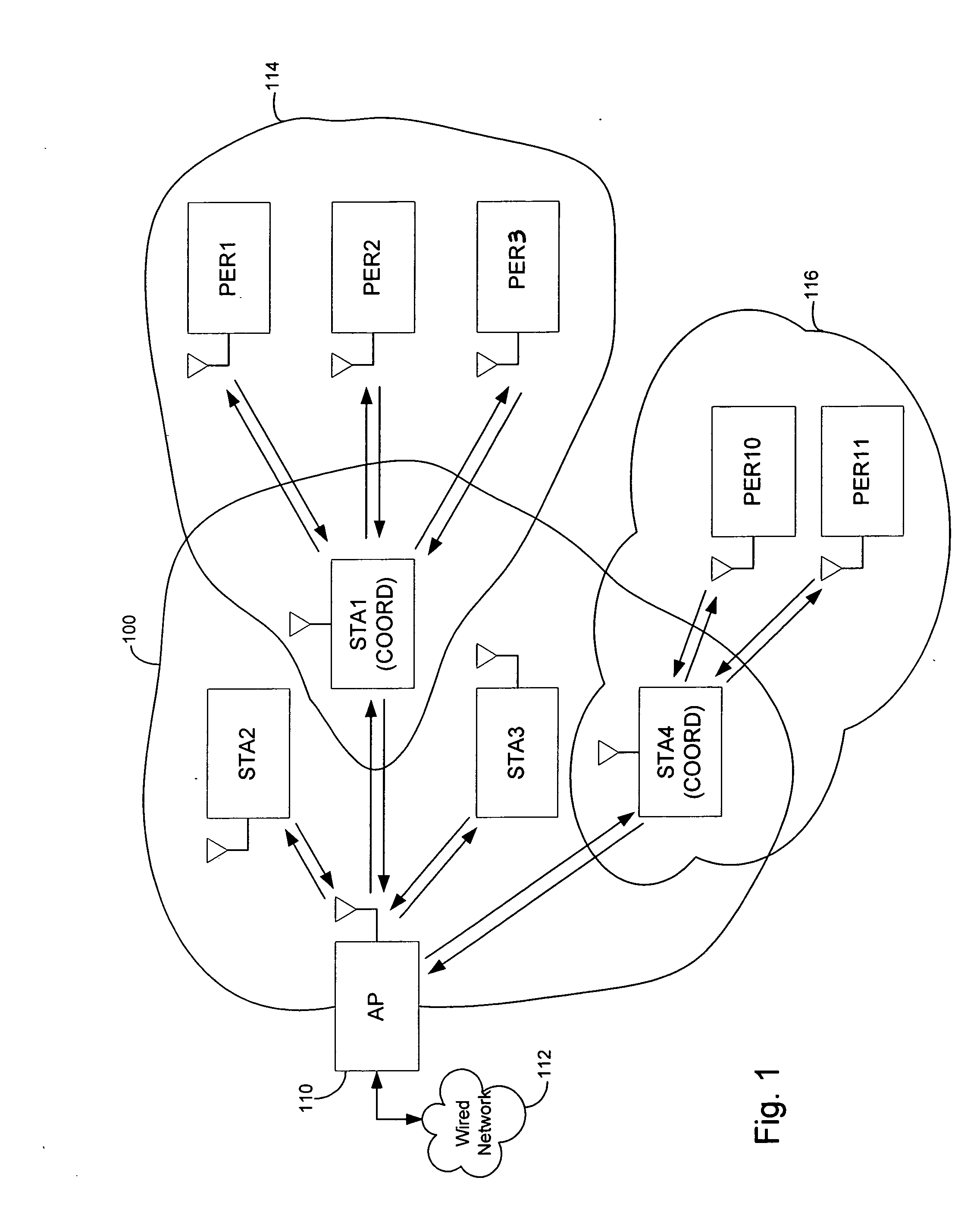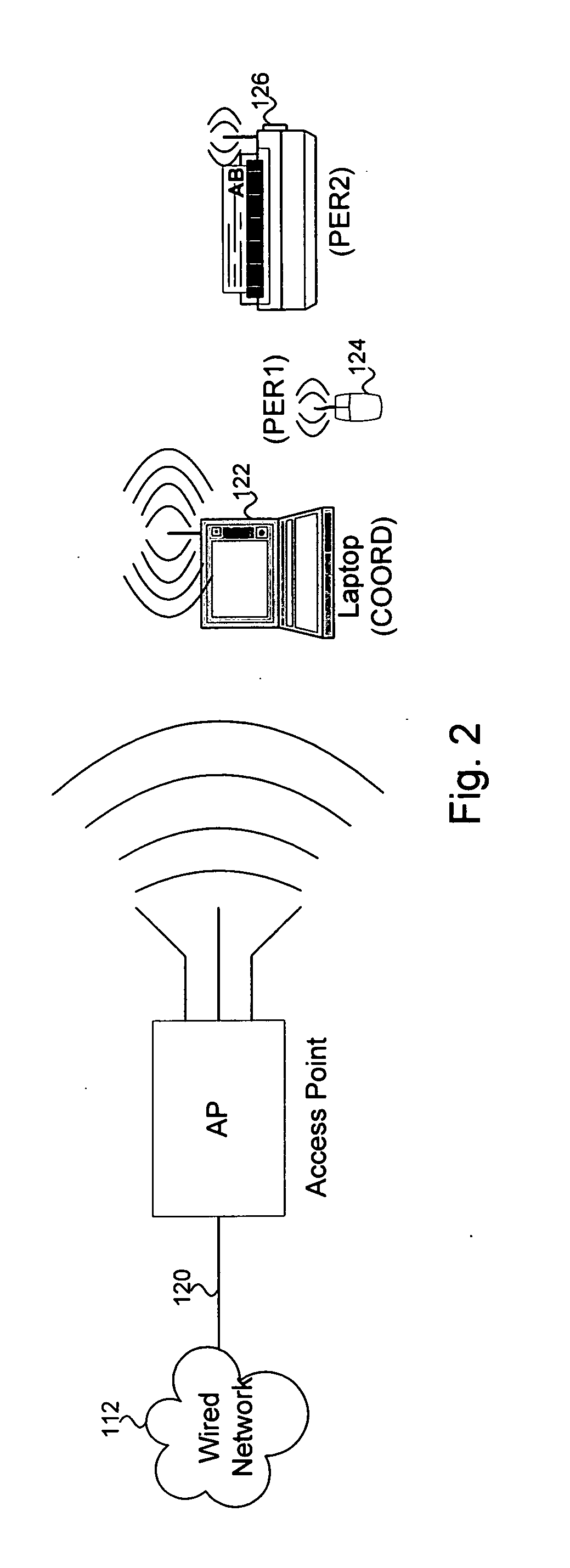Method and apparatus for operating a wireless PAN network using an overlay protocol that enhances co-existence with a wireless LAN network
a wireless pan and overlay protocol technology, applied in the field of methods, can solve the problems of reducing the seamless user experience, burdening and annoyance of users, weight and complexity, and additional concerns, and achieve the effects of reducing interference, power, and latency
- Summary
- Abstract
- Description
- Claims
- Application Information
AI Technical Summary
Benefits of technology
Problems solved by technology
Method used
Image
Examples
Embodiment Construction
[0038] The present disclosure describes methods and apparatus for operating a secondary wireless network (“SWN”) in the presence of a primary wireless network (“PWN”), including features, elements, configurations and / or programming that allow for co-existence of SWN devices in a space where PWN traffic might occur, as well as features, elements, configurations and / or programming that include coordination between a PWN and an SWN (or pluralities of these) such that a device might handle traffic for each of the networks present.
[0039] For example, a computing device might have a common network interface that allows the computing device to be a node in the PWN and a node in the SWN. In a particular example, a computing device is an 802.11x STA that is a member of a PWN capable of associating with and communicating with an AP for that PWN (as well as possibly other devices in that PWN) using a network interface while also elements of that same network interface are used to simultaneous...
PUM
 Login to View More
Login to View More Abstract
Description
Claims
Application Information
 Login to View More
Login to View More - R&D
- Intellectual Property
- Life Sciences
- Materials
- Tech Scout
- Unparalleled Data Quality
- Higher Quality Content
- 60% Fewer Hallucinations
Browse by: Latest US Patents, China's latest patents, Technical Efficacy Thesaurus, Application Domain, Technology Topic, Popular Technical Reports.
© 2025 PatSnap. All rights reserved.Legal|Privacy policy|Modern Slavery Act Transparency Statement|Sitemap|About US| Contact US: help@patsnap.com



